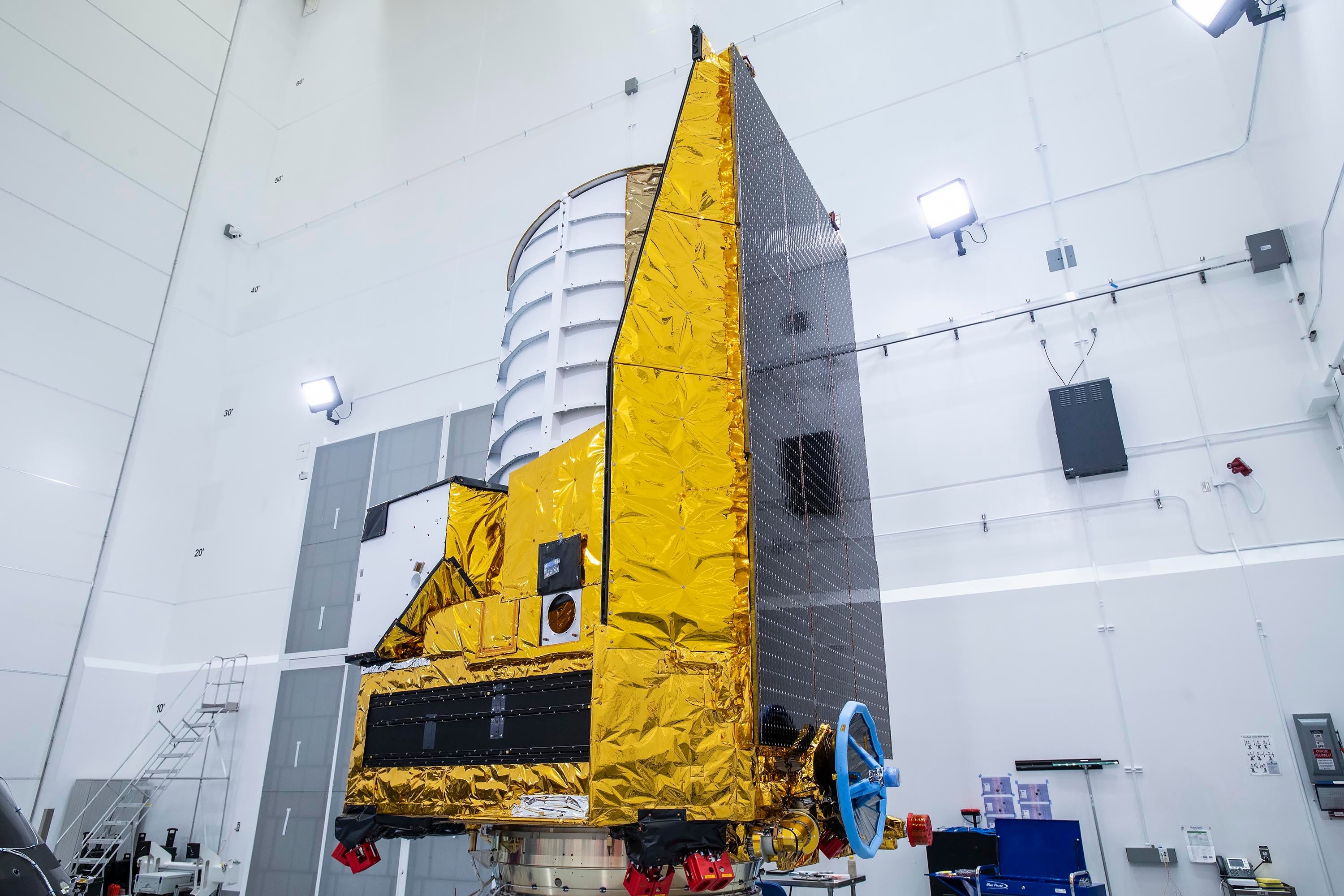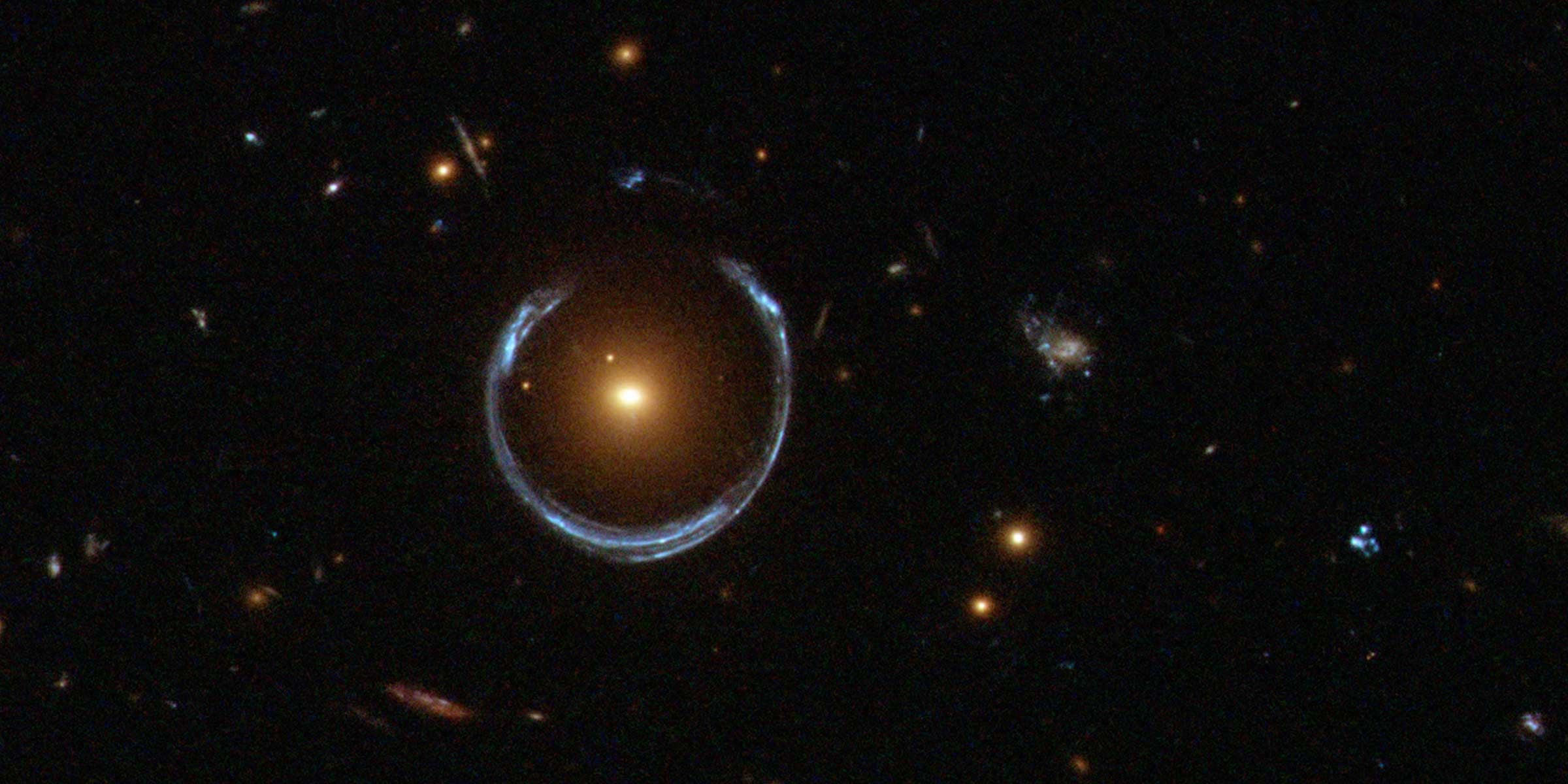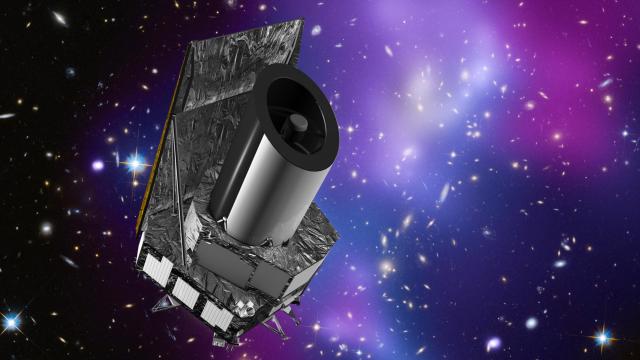Together, dark matter and dark energy comprise 95% of the known universe, yet scientists don’t know what they are. The Euclid telescope, set to launch to space from Florida on Saturday, may help decipher them.
Here’s what you need to know about the world’s newest space telescope.
What is Euclid?
Euclid is a space telescope that will observe the universe at infrared wavelengths. Its primary goal is to map the geometry of the dark universe — hence its name, for the Greek astronomer who dreamt up the foundations of modern geometry in the 3rd century BCE.
Euclid’s wavelength range is 1.1 to 2 microns, firmly in the near-infrared realm. As a relevant aside, the Webb Space telescope also images at near-infrared wavelengths, but is looking for very different things.
The spacecraft has two scientific instruments: a visible light camera (or VIS) and its near-infrared camera and spectrometer (NISP). Its image quality will be at least four times sharper than ground-based surveys of the sky, according to a European Space Agency release.

The telescope is nearly 4 feet in diameter and the spacecraft is about 15.4 feet tall. In orbit, the spacecraft’s mass will be 2.2 tons.
The Euclid mission has an expected lifetime of six years, though it could well be extended depending on the amount of fuel the telescope has at the end of that timeline.
What is Euclid looking for (and why)?
The universe has existed for nearly 14 billion years; it’s been roiled with heat and light at some times, but has also undergone murky eras shrouded in gas. In the last several billion years, the universe has been expanding at an accelerating rate. The driver of this expansion is uncertain, and so the catch-all term “dark energy” is used to describe whatever might be responsible.
Astronomers hope that Euclid will begin to explain dark energy, but also dark matter, the catch-all term for unaccounted mass in the universe. While dark matter is invisible to us — no instruments have ever directly detected it — we know it exists due to its gravitational effects. For example, dark matter bends light around it, allowing scientists to see it in the gravitational lensing of distant light sources.

Dark matter candidates are plenty, and it’s entirely possible — if not likely — that dark matter is composed of multiple things. But the most popular candidates these days are Weakly-Interacting Massive Particles (WIMPs) and axions, a subatomic particle named for a laundry detergent. Dark photons — particles that may behave like a particle or a wave, like light particles — are also in the mix.
Because distant light is affected by dark matter, it’s a good place for Euclid to seek explanations. The telescope will observe billions of targets that are seen as they were 10 billion years ago, according to the ESA. Its imagery will cover over one-third of the sky beyond the Milky Way.
Euclid will look at all types of gravitational lensing, from the strong lensing that produces mesmerising Einstein rings to the weak lensing that distorts distant galaxies, to better understand the properties of dark matter. A recent study of Einstein rings boosted the case for a type of axionic dark matter, or dark matter that behaved like a wave, rather than a particle.

Euclid will also look at baryonic acoustic oscillations of the universe, or bubbles of dense particles that rippled outwards in the first 300,000 years following the Big Bang (that sounds like a long time, but it was the infancy of our universe). Studying how these bubbles emanated outwards will clarify the rate of the universe’s expansion over its near-14-billion-year existence.
The ultimate objective of Euclid’s observations is to take data on distant cosmic sources that help explain the properties of dark matter and dark energy. Besides pulling back the curtain on the nature of these unknown aspects of the universe, Euclid’s data will help scientists understand the cosmic web, or the superscale structure of our universe, from the shape and spatial orientation of galaxies to the distribution of mass across the cosmos.
With Euclid, scientists can tinker with the biggest outstanding questions of astrophysical science: why is the universe expanding, when will it stop expanding, what particles in the universe have we not yet detected and why, what is the ultimate fate of the universe, and so on.
What are the launch details?
Euclid is set to launch no earlier than 11:11 a.m. ET Saturday from Cape Canaveral, Florida. The spacecraft’s back-up launch date is Sunday, July 2, according to a European Space Agency release.
Euclid is being launched on a SpaceX Falcon 9 rocket. Originally, the plan was for the telescope to launch in 2022 aboard a Russian Soyuz rocket, but the ESA’s cooperation with the Russian space agency Roscosmos ceased following Russia’s invasion of Ukraine, pushing back the launch and landing the spacecraft on a U.S. company’s rocket.
The ESA briefly considered launching Euclid on its own Ariane 6 rocket, but as of last month the rocket still has not made it off the launchpad.
Euclid will launch to L2 (or the second Lagrange point), a region of space about 1.5 million kilometres from Earth that allows objects to be gravitationally suspended in such a way that they can minimise fuel burns to stay in orbital position. The Gaia and Webb space telescopes are also at L2.
If Euclid’s launch is precise, the telescope may be able to save propellant, thereby prolonging its mission lifetime. The Webb Space Telescope’s minimum baseline was five years, but thanks to its launch the observatory may last closer to 20 years.
Should the launch occur as scheduled, Euclid is expected to separate from its Falcon 9 launch vehicle at 11:53 a.m. local time, and the team on the ground will first get a signal from the spacecraft around 11:57 a.m., according to the ESA.
You can watch the launch live on Saturday here (for NASA’s feed) or here (for the ESA’s).
